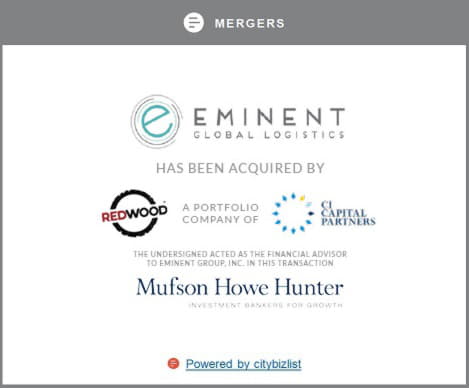Raytheon (NYSE:RTN) and Honeywell (NYSE:HON) are two industrial powerhouses with exposure to red-hot end markets -- defense in the case of Raytheon, and commercial aerospace and construction for Honeywell. But each has had its share of detractors in recent quarters.
Honeywell has faced pressure from activists concerned with lagging revenue growth and pushing for a breakup. Raytheon has underperformed the S&P 500 by more than 20% in the last three months on investor fears that the defense rally had become overheated, and on concerns about how the company is deploying its cash.
In both cases, management teams have cautioned against investor overreaction and have expressed confidence in the outlook.
Here's a look at where both companies stand coming out of second-quarter earnings, with an eye toward determining which is a better buy today.
Market Cap | TTM Revenue | Forward P/E Ratio | TTM P/S Ratio | TTM Dividend Yield | |
|---|---|---|---|---|---|
| Raytheon | $57.49 billion | $25.96 billion | 17.34 | 2.21 | 1.66% |
| Honeywell | $118.39 billion | $42.28 billion | 17.91 | 2.80 | 1.84% |
DATA SOURCE: YAHOO! FINANCE. DATA AS OF AUGUST 27, 2018. TTM = TRAILING 12 MONTH.
Weapons master
Raytheon is a defense specialist focused on areas including precision weapons, anti-missile systems, sensors, and radars. The company's shares have nearly doubled over the past three years thanks to an increasing Pentagon budget and the Defense Department's particular focus on areas in which Raytheon is strong.

ILLUSTRATION OF A RAYTHEON SM-3 INTERCEPTOR IN ACTION. IMAGE SOURCE: RAYTHEON.
The company's second-quarter earnings report included a beat on both earnings and revenueand a boost to full-year guidance. Raytheon's backlog at the end of the quarter stood at $39.88 billion, up from $36.17 billion last year, and its book-to-bill ratio was an impressive 1.3.
Not all of the news was positive. Raytheon cut its full-year operating cash flow guidance to $2.6 billion to $3 billion, down from $3.6 billion to $4 billion, after making a $1.25 billion pension contribution. Raytheon said the move would help reduce its overall tax obligation, bringing its effective tax-rate guidance for the year down to 10.5% from 18%, but the cash hit was blamed for company shares falling more than 3% after the July 26 announcement.
Expect the Pentagon to grow munition spending annually well into the early 2020s, and for Raytheon to get an outsized share of that increase. Congress authorized the purchase of more than 48,000 bombs and missiles in fiscal 2019, a 20% increase over 2018, while increasing missile defense spending by nearly 25% to $9.9 billion. Over the next five years, the Pentagon expects to invest about $47 billion in missile defense, about $14 billion above the last five-year plan estimate.
The Department of Defense is focused on replacing precision-guided weapons like Raytheon's Tomahawk missile and laser-guided bombs that have been used heavily in the Middle East. At the same time, the government is also investing in next-generation weapons including Raytheon's Smart Diameter Bomb and research into future systems such as Raytheon's Naval Strike Missile, an over-the-horizon weapon.
Raytheon should also benefit from increased demand overseas. The company is the most diverse U.S. prime contractor in terms of international sales, with foreign customers accounting for about one-third of total revenue and more than 40% of its backlog. Raytheon's Patriot missile systems are deployed across the Middle East and in a growing number of European countries.
Raytheon expects full-year earnings of between $9.77 and $9.97 per share, up from previous guidance of $9.70 to $9.90 per share. Full-year sales guidance was also upped by about $200 million, to a range of $26.7 billion to $27.2 billion. Depending on how quickly Pentagon allocations come in, that raise could still be conservative, and given the Defense Department's priorities, the stage is set for Raytheon to continue growing into 2019 and beyond.
A revamp nearing completion
It's a year of transition for Honeywell, as the industrial conglomerate looks to pare down its offering to fewer end markets and focus on areas where software and technology are transforming manufacturing. The company on August 23 filed registration statements to spin off two units, its Garrett Motion auto-turbocharger division and its Resideo Technologies home-products business, before the year's end.

IMAGE SOURCE: HONEYWELL.
The spins followed calls by activist Third Point LLC to break up the company, but Honeywell post-spin will still dabble in a range of markets including aerospace, performance materials, and security and safety. Honeywell CEO Darius Adamczyk in April called the company's shares a "steal" at $165, just about its current price, and the company's results have only improved in the months since.
Honeywell last week raised its full-year guidance for adjusted earnings per share to $8.10 to $8.20, up from $8.05 to $8.15, thanks to $3 billion in one-time dividends to be paid by Garrett and Resideo at separation as well as strong demand coming from aerospace and other end markets and changes in accounting related to some of its asbestos liabilities.
The company is losing about $7.6 billion in annual revenue and between 10% and 15% of pre-spin Ebitda as part of the split, but it will be able to backfill at least some of that loss with the $3 billion dividend via paying down debt and repurchasing shares. The two new companies have also agreed to pay up to $315 million annually toward asbestos and other legacy liabilities, reducing Honeywell's potential annual liability cost by about $0.40 per share.
The businesses that remain are performing well. Honeywell in the second quarter beat estimates on both earnings per share and revenue, led by aerospace and safety. Honeywell generated about 6% organic growth in the quarter, easily beating its 3% to 4% guidance, and it increased overall margins by about 40 basis points. It also followed through on its promise to generate more cash, with free cash flow of $1.662 billion up 42% from the second quarter of 2017.
The criticism of Honeywell in recent years has been over a lack of top-line growth. The hope is that shedding two slower-growing units, coupled with increased free cash flow and newfound balance sheet flexibility that should allow for targeted M&A, will help turbocharge the shares and make Adamczyk's stock call look astute.
The better buy is...
Raytheon has a strong business and caters to areas on which the Pentagon is focused, but even if the company does continue to generate growth, it seems unlikely the stock can climb at the rate equal to the last three years. It's also trading at multiples to earnings and sales well above its 10-year average, and its reliance on government customers means it's vulnerable to an eventual pullback due to political squabbles or a Washington spending slowdown.
Honeywell is not cheap either, but the company's mix of businesses should help it weather a sector-specific slowdown in aerospace or a pullback in construction starts. And after more than a year of work on portfolio reshaping, investors should soon start to see the benefits of Adamczyk's transformation efforts.
Both companies feel more like holds at this moment, but of the two, Honeywell is the better buy. Buying into Honeywell right now is a bet that the newly streamlined company will be able to generate higher growth rates and will have the capital needed to do bolt-on acquisitions.
It will likely take time to play out, but chances are Adamczyk's vision for the company, and its share price, will become a reality.
Honeywell International is not on our top "Buy" list, but these 10 stocks areInvesting geniuses David and Tom Gardner just released their best stocks to buy now -- and it could pay to listen. Especially when you consider their average stock pick is up 353% vs. a mere 81% for the S&P 500.
They just shared what they think are the ten best stocks for investors to buy right now to members inside their service Motley Fool Stock Advisor… and Honeywell International wasn't one of them! That's right -- they think these 10 stocks are even better buys.









